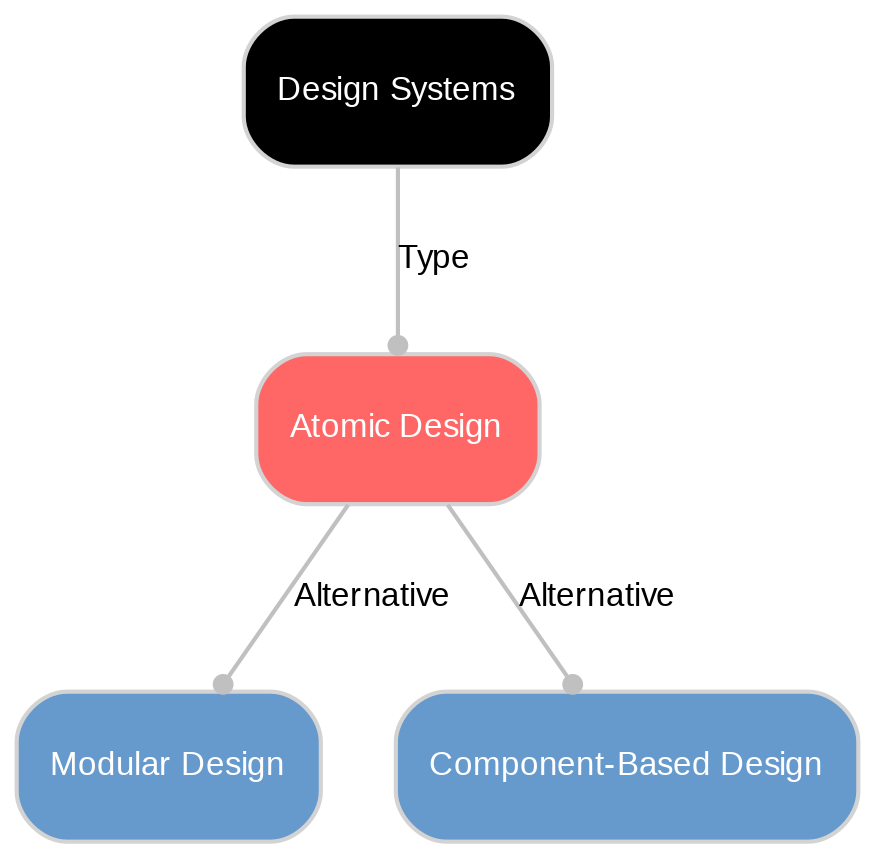Atomic design definition
Atomic Design is a method that simplifies user interface creation, enhancing consistency and scalability by breaking down components into atoms, molecules, organisms, templates, and pages.
Understanding the methodology of Atomic design
The methodology of Atomic design takes inspiration from the world of chemistry, breaking down user interfaces into five distinct levels - atoms, molecules, organisms, templates and pages. Considered as the basic building blocks of an interface system, atoms represent fundamental elements like buttons or text. These atoms are then grouped together to form molecules. As we move up in complexity, we combine these molecules to create organisms.
In this context, an organism could be a header or a specific section on a webpage. Atoms and molecules come together in these organisms to form meaningful sections within the interface. From here we progress further to create templates by arranging multiple organisms together.
Templates, essentially provide us with the layout structure for different pages within our user interface system. Lastly, actual content is added into these templates creating final webpages or what atomic design refers as 'Pages'. This hierarchical approach not only promotes consistency and scalability but also facilitates effective collaboration between designers and developers.
A key aspect of atomic design is its emphasis on creating simple yet reusable components that function well both individually and when combined with other elements in a system.

How to implement Atomic design in your projects
To effectively implement Atomic design in your projects, it is vital to start with the smallest components - the atoms. These could be simple elements like buttons or input fields. The next step involves grouping these atoms together to form more complex units, called molecules. For instance, a molecule could be a search bar consisting of a text field (atom) and a button (atom).
The complexity increases further as we combine molecules to form organisms, such as headers or footers. From here, you create layouts or templates by arranging different organisms together.
The final step is adding real content into these templates resulting in fully fledged webpages or 'Pages'. Tools like Storybook can significantly aid this process by serving as an environment for visualizing and testing components.
A key principle of Atomic Design is reusability. By designing each component with reuse in mind, you can save significant time and effort later on. This approach leads not only to efficient project completion but also consistent user interfaces across different pages and contexts.
The benefits and challenges of Atomic design
Atomic design offers multiple benefits that can enhance the overall effectiveness of your project. Key among these is consistency. By breaking down interfaces into their smallest parts, Atomic design ensures consistent use of elements across different pages and contexts. It also promotes scalability, as it allows for the easy addition or modification of components without disrupting the entire system.
This methodology encourages reusability, thereby saving significant time and effort in development. It further enhances collaboration between designers and developers, making it easier to understand layouts, prototype designs, update components efficiently and maintain systems.
Despite its many advantages, implementing Atomic Design can present certain challenges. The process might initially appear complex or time-consuming due to its focus on dissecting interfaces into minute parts. Some might find this approach limits creativity by enforcing a strict structure for interface construction.
The learning curve could be steep for those unfamiliar with this methodology. However, once understood and implemented correctly, Atomic Design proves instrumental in creating efficient, adaptable interfaces that significantly improve user experience.
Unlock New Possibilities with Sanity
With Atomic design under your belt, it's time to see what Sanity can do for you. Explore our features and tools to take your content to the next level.
Last updated: